
Caliban is the second-largest retrograde irregular satellite of Uranus. It was discovered on 6 September 1997 by Brett J. Gladman, Philip D. Nicholson, Joseph A. Burns, and John J. Kavelaars using the 200-inch Hale Telescope together with Sycorax and given the temporary designation S/1997 U 1.

Ananke is a retrograde irregular moon of Jupiter. It was discovered by Seth Barnes Nicholson at Mount Wilson Observatory in 1951. It is named after the Greek mythological Ananke, the personification of necessity, and the mother of the Moirai (Fates) by Zeus. The adjectival form of the name is Anankean.

Themisto, also known as Jupiter XVIII, is a small prograde irregular satellite of Jupiter. It was discovered in 1975, subsequently lost, and rediscovered in 2000.
Sycorax is the largest irregular satellite of Uranus. It was discovered in September, 1997 on the Hale Telescope in California. Sycorax's orbit is retrograde, irregular, and much more distant than that of Oberon, the furthest of Uranus' regular moons. With a diameter of over 150 kilometres (93 mi), it is the largest irregular moon of Uranus. It has been theorized that Sycorax is a captured object, as opposed to one formed with Uranus.
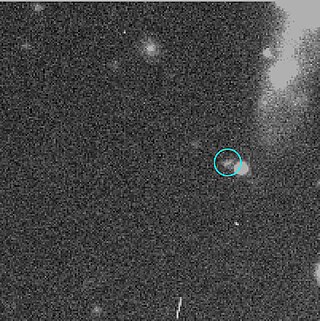
Prospero is a relatively small retrograde irregular satellite of Uranus discovered on 18 July 1999 by the astrophysicist Matthew Holman and his team, and given the provisional designation S/1999 U 3. Confirmed as Uranus XVIII it was named after the sorcerer Prospero in William Shakespeare's play The Tempest.

Kiviuq is a prograde irregular satellite of Saturn. It was discovered by J. J. Kavelaars et al. in 2000, and given the temporary designation S/2000 S 5. It was named after Kiviuq, a hero of Inuit mythology.
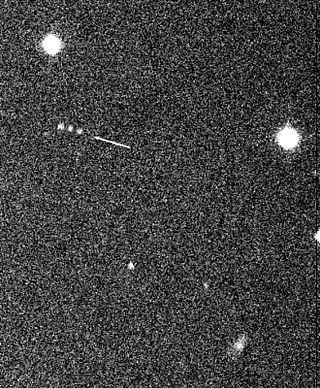
Paaliaq is a prograde irregular satellite of Saturn. It was discovered by J. J. Kavelaars, Brett J. Gladman, Jean-Marc Petit, Hans Scholl, Matthew J. Holman, Brian G. Marsden, Philip D. Nicholson and Joseph A. Burns in early October 2000, and given the temporary designation S/2000 S 2. It was named in August 2003 after a fictional shaman in the book The Curse of the Shaman, written by Michael Kusugak, who supplied Kavelaars with the names of giants from Inuit mythology that were used for other Saturnian moons.
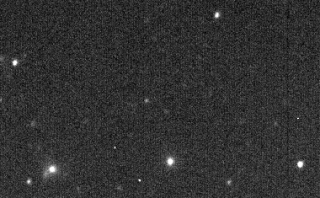
Erriapus, or Saturn XXVIII (28), is a prograde irregular satellite of Saturn. It was discovered by Brett Gladman, John J. Kavelaars and colleagues in 2000, and given the temporary designation S/2000 S 10. It was named Erriapo in August 2003 after Erriapus, a giant in Gaulish mythology; the name was changed from dative Erriapo to nominative Erriapus per IAU conventions in late 2007.
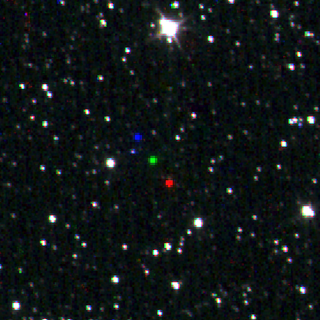
Siarnaq, also designated Saturn XXIX, is the second-largest irregular moon of Saturn. It was discovered on 23 September 2000 by a team of astronomers led by Brett J. Gladman. It was named after the Inuit goddess of the sea, Siarnaq, who is more commonly known as Sedna. Siarnaq is the largest member of Saturn's Inuit group of prograde irregular moons, which orbit far from Saturn in the same direction as the planet's rotation. The moons of the Inuit group are believed to have originated as fragments from the collisional breakup of a larger progenitor moon after it was gravitationally captured into orbit around Saturn several billion years ago. Several other small Inuit group moons share similar orbits to Siarnaq, indicating that the moon had experienced another collision after forming from its progenitor.
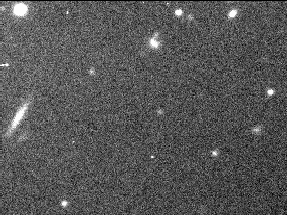
Tarvos, or Saturn XXI, is a prograde irregular satellite of Saturn. It was discovered by John J. Kavelaars et al. on September 23, 2000, and given the temporary designation S/2000 S 4. The name, given in August 2003, is after Tarvos, a deity depicted as a bull god carrying three cranes alongside its back from Gaulish mythology.

Stephano is a retrograde irregular satellite of Uranus. It was discovered by Brett J. Gladman, et al. in 1999, and given the provisional designation S/1999 U 2.

Trinculo is a retrograde irregular satellite of Uranus. It was discovered by a group of astronomers led by Holman, et al. on 13 August 2001, and given the temporary designation S/2001 U 1.

Francisco is the innermost irregular satellite of Uranus.
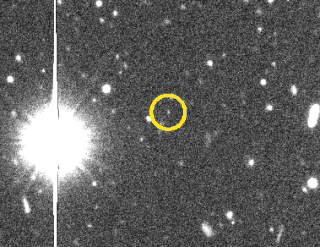
Margaret is the only known prograde irregular satellite of the moons of Uranus. It was discovered by Scott S. Sheppard, et al. in 2003 and given the provisional designation S/2003 U 3.
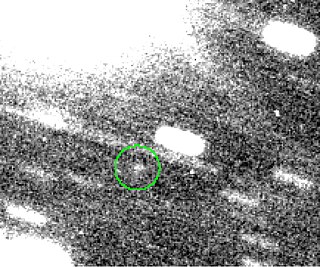
Ferdinand is the outermost retrograde irregular satellite of Uranus. It was first seen near Uranus by Matthew J. Holman, John J. Kavelaars, Dan Milisavljevic, and Brett J. Gladman on August 13, 2001 and reobserved on September 21, 2001. The object was then lost with no confirmation it was actually orbiting around Uranus.

Halimede, or Neptune IX, is a retrograde irregular satellite of Neptune. It was discovered by Matthew J. Holman, John J. Kavelaars, Tommy Grav, Wesley C. Fraser and Dan Milisavljevic on August 14, 2002.
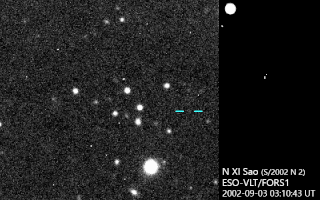
Sao is a prograde irregular satellite of Neptune. It was discovered by Matthew J. Holman et al. on August 14, 2002.

Neso, also known as Neptune XIII, is the second-outermost known natural satellite of Neptune, after S/2021 N 1. It is a retrograde irregular moon discovered by Matthew J. Holman, Brett J. Gladman, et al. on 14 August 2002, though it went unnoticed until 2003. Neso is the second-most distant moon of Neptune, with an average orbital distance of nearly 49.6 million km. At its farthest point of its orbit, the satellite is more than 72 million km from Neptune. This distance exceeds Mercury's aphelion, which is approximately 70 million km from the Sun.

The Gallic group is a dynamical grouping of the prograde irregular satellites of Saturn following similar orbits. Their semi-major axes range between 16 and 19 Gm, their inclinations between 36° and 41°, and their eccentricities between 0.46 and 0.53. The International Astronomical Union (IAU) reserves names taken from Gallic mythology for these moons.
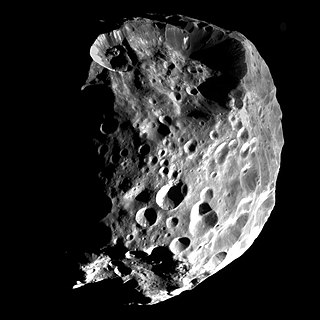
In astronomy, an irregular moon, irregular satellite, or irregular natural satellite is a natural satellite following a distant, inclined, and often highly elliptical and retrograde orbit. They have been captured by their parent planet, unlike regular satellites, which formed in orbit around them. Irregular moons have a stable orbit, unlike temporary satellites which often have similarly irregular orbits but will eventually depart. The term does not refer to shape; Triton, for example, is a round moon but is considered irregular due to its orbit and origins.






















